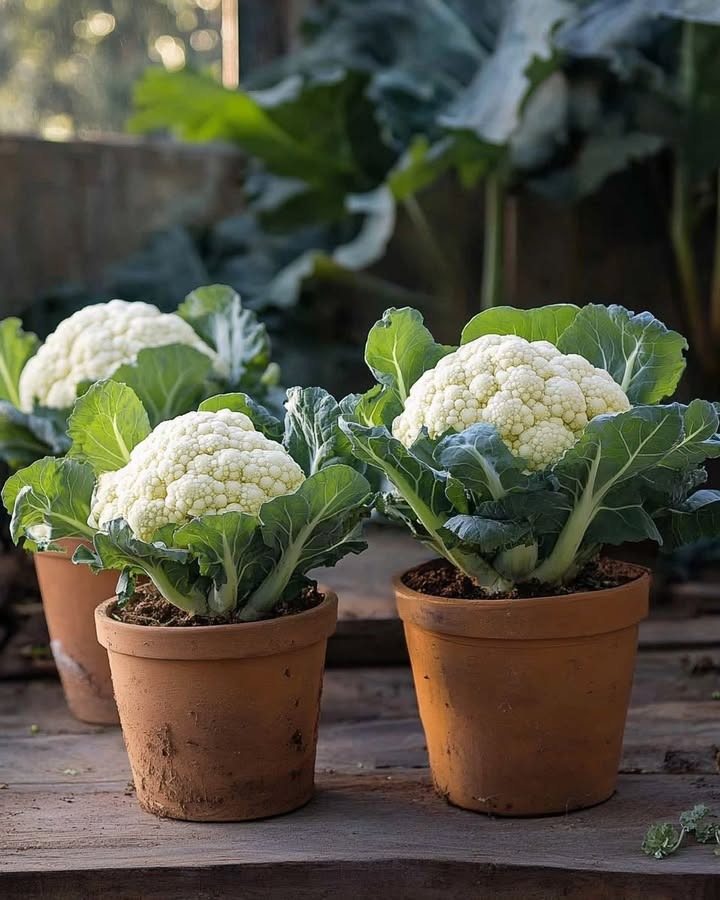Place the container where it will receive at least 6 hours of direct sunlight daily. Some sources suggest 6‑7 hours. Agri Farming+1
Because containers can heat up, in extremely hot weather (above ~75‑80 °F / 24‑27 °C), move the pot to a cooler spot or provide afternoon shade. Cauliflower stressed by heat may button (produce small heads) or bolt. Gardener’s Path
Watering
Cauliflower needs consistent moisture — it is moisture‑sensitive. Dry spells cause small heads, loose curds, bitterness. The Spruce+1
Because containers dry out faster than garden beds, you may need to water daily (or every other day) during warm weather. Check soil; if the top inch is dry, water deeply so moisture reaches down. Gardening Know How
Avoid soggy soil either; ensure good drainage so roots are moist but not water‑logged.
Mulch the top of the soil (e.g., shredded leaves or straw) to slow evaporation and keep roots cool. Some guides recommend this. The Spruce
Fertilising / feeding
Cauliflower is a heavy feeder: it will draw a lot of nutrients to form a large head. The Spruce
At planting: incorporate compost/manure. Then every 2‑4 weeks feed with a balanced vegetable fertiliser. Container plants may need more frequent feeding because nutrients leach with watering. Gardening Know How+1
When head begins forming, some growers suggest increasing potassium and phosphorus (to support head development) rather than just nitrogen (excess nitrogen drives leaves, not head).
Avoid too much nitrogen late in the cycle because it can delay head formation or cause loose heads.
Monitoring
Keep an eye on temperature (pots can heat up), moisture, any signs of stress (leaf yellowing, curling, bolting).
Remove any weeds in the pot; check for pests under leaves and at soil surface.
Rotate position (if needed) so the plant receives balanced light.
With consistent care of water, light, and nutrients, you maximise the potential for a large head.
Step 5: Blanching (for white cauliflower) & protecting the head
What is blanching?
Blanching is the process of covering the developing cauliflower head (curd) so it stays white (or the desired color) and so that light exposure doesn’t lead to green or yellow discoloration and bitterness. Gardening Know How+1
How and when to blanch
When the head (curd) is about 2‑3 inches (5–7 cm) across, you should start. weekand.com
Gently pull the larger outer leaves of the plant up over the forming head, and tie or secure them (with garden twine, rubber band, clothespin) so they shade it.
Do not wrap too tightly—allow some airflow.
Some varieties are “self‑blanching” (with leaves that naturally cover the head). If you chose such a variety, manual blanching may not be necessary. Gardener’s Path
For coloured varieties (purple, orange) blanching isn’t always needed. Palmers
Why it matters
It helps produce aesthetically pleasing white heads (if that is your goal).
Protects the curd from sun/scorch which can lead to discoloration or bitterness.
Helps the head remain tight and attractive.
So for largest, best‑quality heads, don’t skip this step (unless you chose a coloured or self‑blanching variety and are okay with natural color).
Step 6: Pests, diseases & common problems in containers
Common problems
